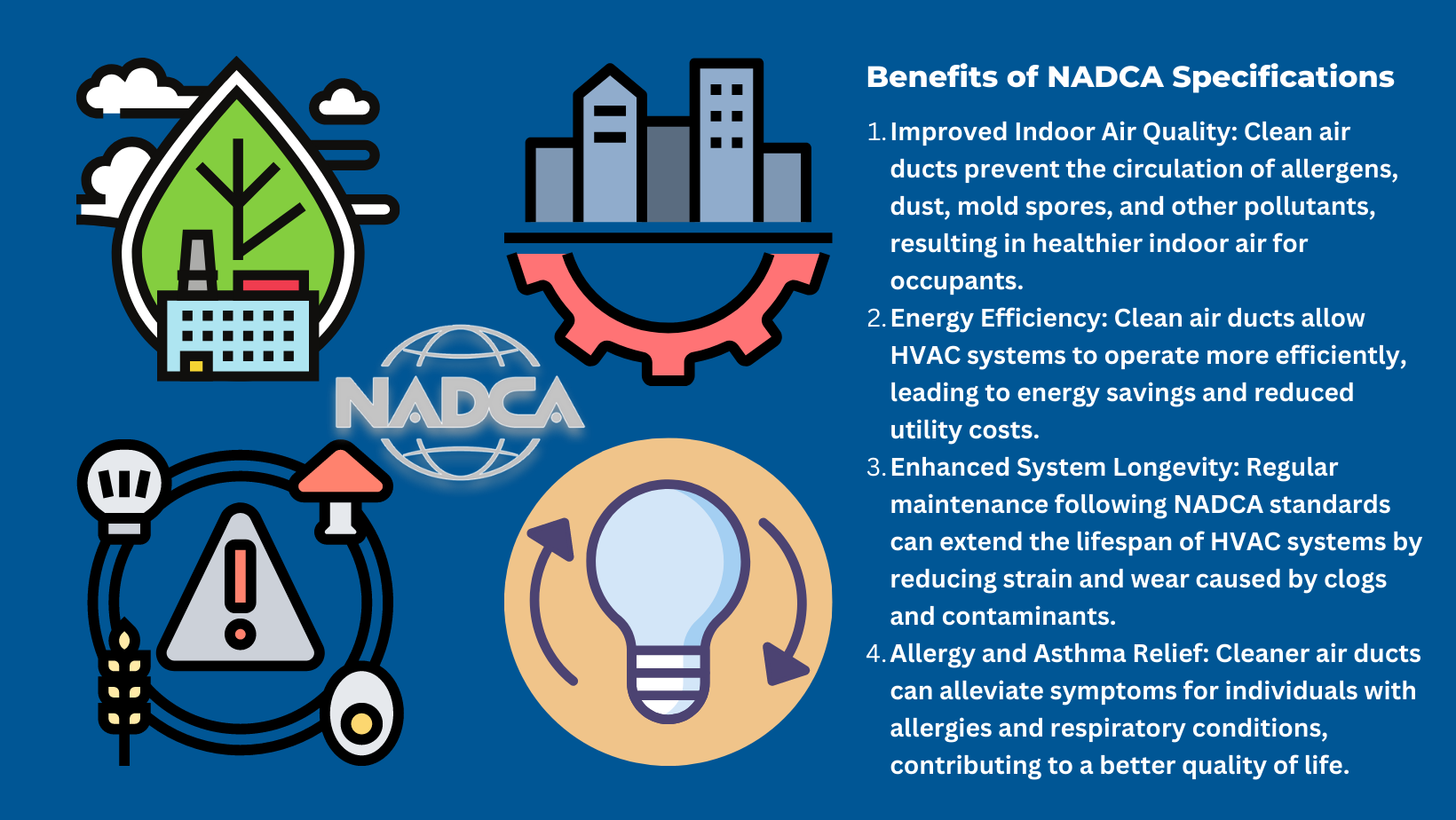
Clean air is a fundamental requirement for healthy indoor environments, and proper maintenance of air ducts plays a crucial role in achieving this goal. The National Air Duct Cleaners Association (NADCA) is the organization that sets industry standards for maintaining clean and efficient air duct systems. So who is the NADCA, what specifications do they have, and how does it benefit you and your facility?
Understanding NADCA
The National Air Duct Cleaners Association is a professional trade organization dedicated to setting guidelines and standards for the cleaning and maintenance of HVAC (Heating, Ventilation, and Air Conditioning) systems. NADCA's recommendations and specifications are designed to ensure that air ducts are clean, functional, and free from contaminants that can compromise indoor air quality.
Key NADCA Specifications for Clean Air Ducts
-
Inspection and Assessment: NADCA emphasizes the importance of a thorough inspection of air duct systems before any cleaning takes place. This assessment helps identify the level of contamination, potential issues, and the appropriate cleaning methods to use.
-
Source Removal: NADCA advocates for source removal cleaning methods, which involve physically dislodging and removing contaminants from the air duct system. This method is considered the most effective way to eliminate accumulated dust, debris, mold, and other contaminants.
-
Professional Expertise: NADCA specifications stress the significance of hiring trained and certified professionals for air duct cleaning. These experts are knowledgeable about the best practices, techniques, and equipment required to achieve optimal results without causing damage to the system.
-
Containment and Protection: During the cleaning process, NADCA guidelines emphasize the importance of containing contaminants and protecting the surrounding areas. Properly sealed systems prevent contaminants from spreading throughout the building.
-
Equipment and Techniques: NADCA specifications cover the types of equipment and techniques that should be used during the cleaning process. This includes the use of high-efficiency particulate air (HEPA) vacuum systems, brushes, and agitating devices to dislodge and remove contaminants effectively.
-
Post-Cleaning Verification: After cleaning, NADCA recommends performing a post-cleaning verification process to ensure that contaminants have been effectively removed. This often involves visual inspections and potentially using tools like remote cameras to assess the cleanliness of the ducts.
Following NADCA specifications for clean air ducts offers numerous benefits for both residential and commercial spaces:

By adhering to the NADCA standards, property owners and managers can ensure a healthier and more comfortable indoor environment for occupants while also reaping the benefits of energy savings and prolonged system lifespan. Ultimately, investing in proper air duct maintenance according to NADCA guidelines is an investment in the well-being of everyone who inhabits the space.
From infection control for duct cleaning in hospitals to OSHA confined space training and fall protection when working from lifts, Hughes Environmental’s technicians are experienced and trained to meet your facility’s safety requirements. We’ve performed hundreds of HVAC systems cleaning projects in all kinds of facilities. So, whether your building is a manufacturing facility, a university, school, hospital, or office building, we can help you breathe easier with commercial duct cleaning. Learn more here.

